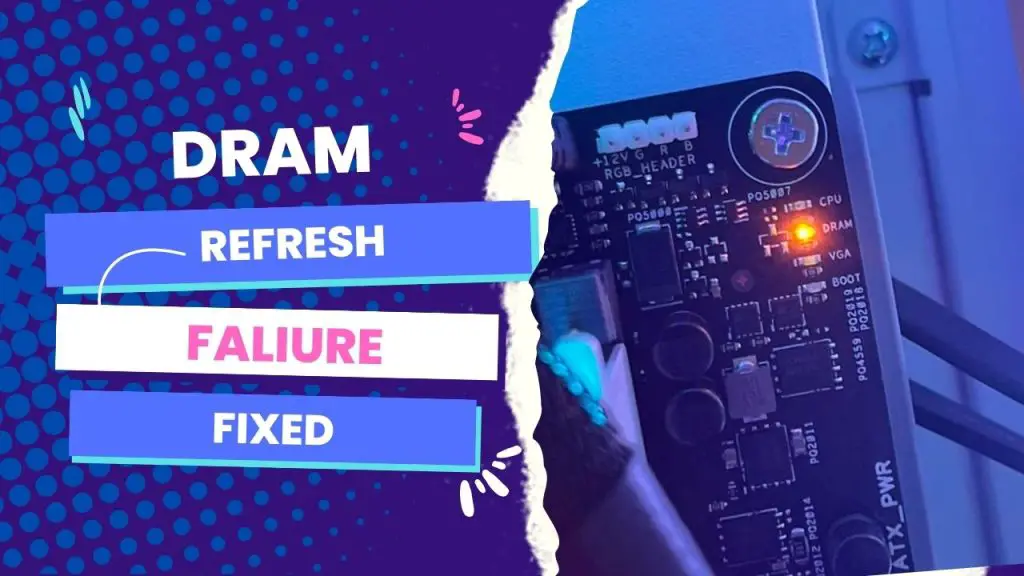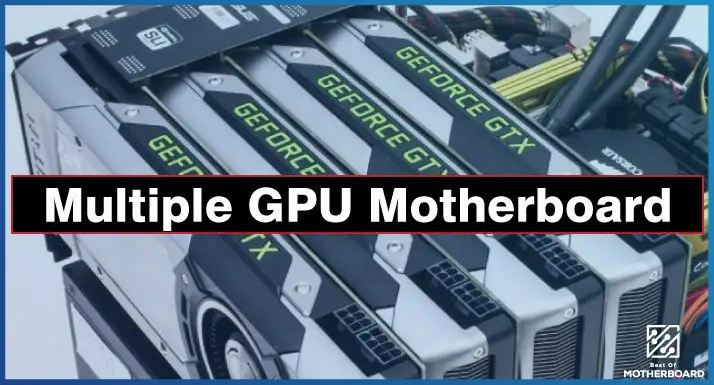The most common cause of DRAM refresh failure is overheating, which can be prevented by ensuring proper cooling. Other causes include outdated BIOS, faulty RAM modules, or power supply issues. Fixing it involves resetting the BIOS, checking for loose connections, replacing faulty RAM modules, or upgrading the power supply if necessary.
The DRAM (Dynamic Random Access Memory) on your motherboard holds data continuously.
The most common answer on PC forums to DRAM-related problems like this is to clear the CMOS. Now for someone who uses, say, an ASRock Z87 Extreme4 that has a “clear CMOS “button on it, that’s pretty easy. but this may not solve the underlying issue.
It could be that both RAMs on your motherboard seem okay and your windows are working fine, but if at startup, your PC’s BIOs emits 1 beep, indicating DRAM refresh failure.
In the rest of this article, I will walk you through the actual causes of DRAM refresh failure, how to diagnose the factors involved in the problem, and how to solve it.
What causes DRAM refresh failure?
The most common cause of DRAM refresh failure is faulty RAM chips. This is why when customers bring their motherboards to my workshop with this particular problem, the first thing I tell them to consider is to replace the computer’s memory with a brand-new chip.
In some scenarios, they still get the same issue after replacing the RAM. In some of those cases, we solve the issue by resetting the memory controller.
When DRAM refresh failure occurs, it means your computer is having an issue either with the device memory or the motherboard.
The Refresh Mode failure is a rare issue where your computer will just display a single beep every time you turn it on, and no matter what you do, your computer will not be able to boot up normally.
3 Fixes for DRAM refresh failure
The first thing to do when troubleshooting for DRAM refresh failure is to check the parts like the processor, memory, video card, and drive for any loose attachment issues. It’d surprise you to know how something as trivial as a loose connection could be the culprit behind those head-scratching moments.
If they are not finely attached then the motherboard will not perform perfectly. Once you’ve checked that all is well and good, then consider these solutions
Diagnose components
Step 1: You need to disconnect all the extra devices other than the motherboard like expansion cards and external peripherals.
Step 2: Check the jumper setting of the motherboard. Also check the processor type, voltage jumpers, and bus speed.
Step 3: Consider resetting all the BIOs settings to default and conservative values. Then set all the memory, cache, and hard disk timing sloe. Then turn off the BIOS shadowing.
Remove the memory
Step 1: To remove a RAM module, press the small levers on each end to release it.
Step 2: Test each memory module in each of the memory slots to determine if one of them is faulty.
Step 3: If a memory slot is found to be faulty, replace the motherboard.
Step 4: Test each memory module individually to identify any bad or degraded modules.
Step 5: If you find a bad module, order a replacement.
Step 6: When replacing a module, make sure that the indentation on the bottom is correctly aligned.
Step 7: Press the module firmly into the slot until you hear the lever snap.
Troubleshoot for overheating
If your device is overheating, showing a memory error, failure in the cache module or errors in the video card then troubleshoot all the problems to fix it.
You can also exchange the motherboard for another one. It will help you decide whether the motherboard is working or not.
What Are the BIOS Beep Codes of DRAM Refresh Failure
The BIOS beep codes for DRAM refresh failure may vary depending on the motherboard manufacturer and BIOS version. Here are the common beep codes for DRAM refresh failure for Asus, MSI, and Gigabyte motherboards:
Asus Motherboard:
- One long beep, followed by two or three short beeps – DRAM Refresh Failure
- One continuous beep, followed by two short beeps – DRAM Error
- Two short beeps – No RAM Detected
MSI Motherboard:
- One long beep, followed by two or three short beeps – DRAM Refresh Failure
- Two short beeps – No RAM Detected
- Three short beeps – DRAM Error
- Four short beeps – System Timer Not Operational
Gigabyte Motherboard:
- One long beep, followed by two or three short beeps – DRAM Refresh Failure
- One long beep, followed by three short beeps – No Memory / RAM Detected
- Two short beeps – Memory Parity Error
- Three short beeps – Base 64k RAM Failure
How serious is the DRAM refresh failure error?
There’s a special logic named “refresh circuit” that accesses your DRAM to perform smoothly. When your computer runs, the circuitry reads the content of each memory cell many times in a minute even if it is not returning at that time.
When this conducts a reading, then it automatically refreshes the content of memory cells. If it fails to upgrade the memory daily, then a situation of data loss happens no matter if the device is turned on or not.
Why Does DRAM Need Refreshing?
Dynamic Random Access Memory (DRAM) stores data in tiny capacitors that represent binary values, either 1 or 0. However, these capacitors are leaky and will gradually lose their charge over time due to electrical resistance, which leads to data loss. Therefore, DRAM requires a process called refreshing to keep the data in the memory cells stable.
Refreshing is a technique where the DRAM controller reads and rewrites the data stored in each DRAM cell periodically, typically every few milliseconds. By doing so, it restores the charge in the capacitors, preventing data loss.
The refresh process requires additional memory access and can affect the overall performance of the system. Therefore, modern DRAM controllers use various techniques to optimize the refresh process, such as grouping memory cells that need refreshing together, and scheduling refresh operations during periods of low memory utilization.
In summary
Sometimes, it can be difficult to say why BIOS makes one beep, indicating DRAM refresh failure, especially when both RAMs seem okay and Windows is working fine.
During the first booting process of a processor from BIOS, the DRAM has to be present. To do this, the processor sends basic handshake electrical signals to tune the memory bus and send some basic DRAM commands. It then requests the ID from the DIMM, which reads the standard configuration, speed, and features, among others.
However, if there is a failure in this step, you get the DRAM refresh failure. In such a case, I recommend you try using only one DIMM or a different one to see if you can get past this stage.
One possible reason for memory failure is overclocking, which can cause the DIMMs to not sync properly.
In this case, resetting the motherboard parameters to default and starting over may resolve the issue. However, this may be an issue for older models.
If the above steps do not resolve the issue, it could be a more serious problem and you’ll need to get in touch with a technician.
But I hope you’ve been able to get past this problem. Then let me know in the comments.



![What Are Motherboard Standoffs? [Guide] 4 What Are Motherboard Standoffs](https://bestofmotherboard.com/wp-content/uploads/2022/01/What-Are-Motherboard-Standoffs.jpg)
![Does it Matter Which PCIe x16 slot I Use? [Guide] 5 Does it Matter Which PCIe x16 slot I Use](https://bestofmotherboard.com/wp-content/uploads/2022/01/Does-it-Matter-Which-PCIe-x16-slot-I-Use.jpg)